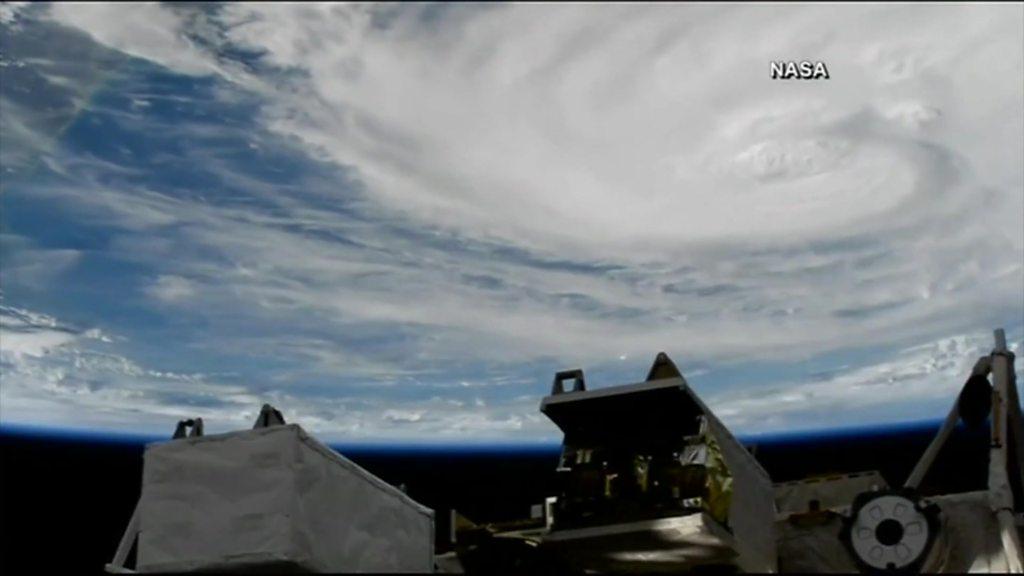Hurricane Harvey: Texas battered by high winds and rain
- Published
Parts of the central Texas coast have been battered by hurricane winds
Hurricane Harvey has slammed into Texas with initial winds of up to 130mph (215km/h) battering coastal areas.
The biggest storm to hit the US mainland in 13 years is moving slowly, with 16.43in (42cm) of rain reported in one area.
Catastrophic flooding is expected, though Harvey's winds were downgraded from category four to category one.
Some residents are feared trapped in collapsed buildings and there have been widespread power cuts.
More than 200,000 customers are without electricity, utility companies say.
After freeing up federal aid for the worst-affected areas, President Donald Trump praised emergency services in a tweet, saying: "You are doing a great job - the world is watching! Be safe."
With Texas Governor Greg Abbott warning of record flooding in multiple regions, Harvey made a double landfall: north-east of the city of Corpus Christi initially, then just north of Rockport a few hours later.
Rockport, normally home to about 10,000 people, appears to have been the hardest hit. Emergency services there say a number of buildings have suffered structural damage.
Pictures posted on social media show collapsed trees and houses.

Main concern is for Rockport
By BBC's James Cook, Corpus Christi
Harvey was pretty ferocious when it came ashore, with screeching wind all night. We saw a reasonable amount of damage being caused by debris flying through the air.
There's no sign though of any serious structural damage in the immediate vicinity here in Corpus Christi. But the main concern is for the town of Rockport, where the eye of the storm came ashore.
There is concern there about a number of buildings, in particular a shelter for the elderly from where people had apparently not been evacuated.

When Harvey struck close to Corpus Christi, around 22:00 local time on Friday (03:00 GMT Saturday), it had winds of up to 130mph.
Travis Pettis, a reporter with the Caller Times newspaper, told the BBC that strong winds when the storm arrived made the rain feel like "needles".
In pictures: Harvey batters Texas
"It was pretty crazy out there. The winds, I don't know what [speed] they topped at but you could barely even walk," he said.
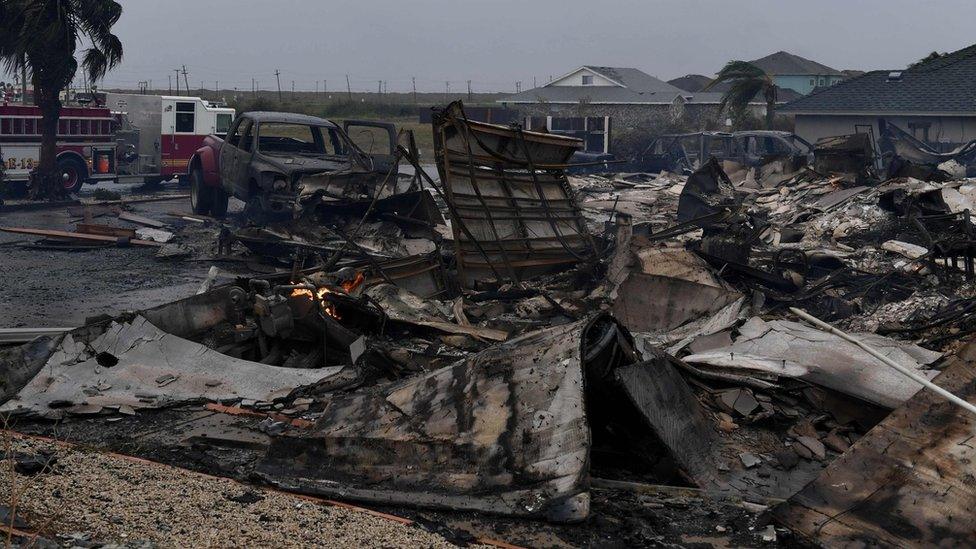
A house that caught fire in Corpus Christi was burnt out by Saturday morning
Trees came down in the city and power supplies were cut, but thousands of residents had heeded warnings and boarded up their homes before fleeing.
When the storm struck again near Rockport, wind speeds had fallen slightly to 125mph.
"Right now we're still hunkered down and can't go anywhere," Steve Sims, Rockport's volunteer fire chief, was quoted as saying by Reuters news agency.
"We've heard rumours of 1,000 different things, we can't confirm anything because we haven't seen anything. We know we've got a lot of problems, but we don't know what yet."
Wind-whipped flames engulf buildings in Texas
Rockport Mayor Patrick Rios said people were trapped in a housing centre for elderly people, where the roof had collapsed and rescue teams were unable to gain access, according to CBS.
He had a stark warning for anyone who refused to leave town: "We're suggesting if people are going to stay here, mark their arm with a Sharpie pen with their name and Social Security number."
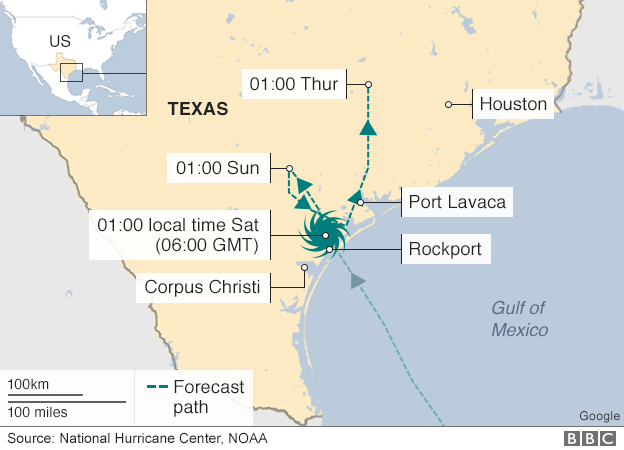
At 09:00 local time, the National Hurricane Center (NHC) said that sustained winds had fallen to a maximum of 75mph. If they drop further, Harvey will be classified as a tropical storm.
Governor Abbot said it was obvious Texas was confronting a "very major disaster", and more than 1,000 National Guardsmen would help with the disaster relief operation.
Harvey is the first major storm of the Atlantic hurricane season. It is forecast to meander across south-east Texas until Wednesday.
The NHC has stressed the danger of life-threatening floods as rising water moves inland from the coastline.
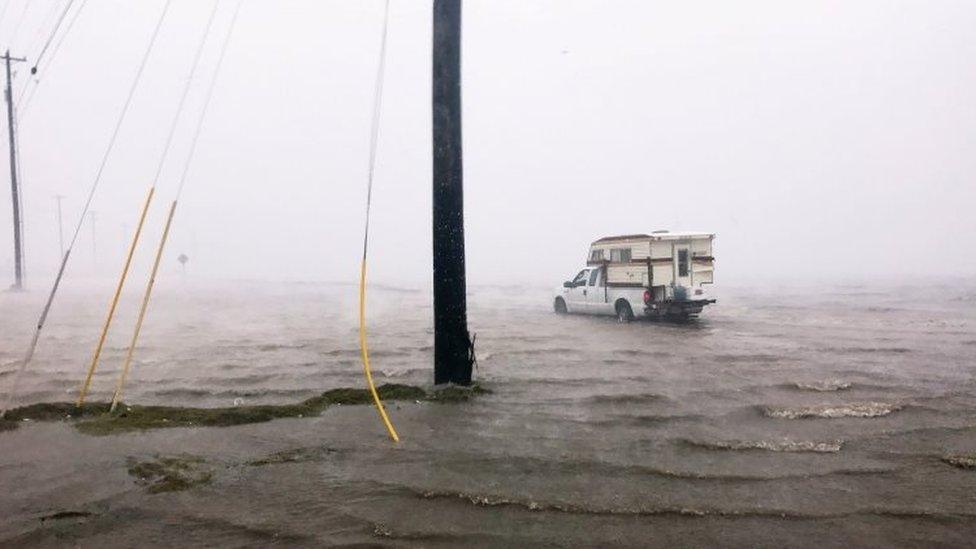
Meteorologists have warned Harvey could continue to dump rain until the middle of next week
Oil-rich Houston, the fourth biggest city in the US, could face up to 20in of rain over the coming days.
Residents there should "not be complacent" and should stay at home and "ride out the storm", Francisco Sanchez, a spokesman for Harris County's emergency management office, told the BBC.
"The most severe weather is yet to come" in the Houston area, he said.
Mr Trump is likely to visit Texas early next week, the White House said.
The storm is the strongest to hit the US since Charley in August 2004 and the most powerful to hit Texas since Hurricane Carla in 1961, which killed 34 people, according to the Houston Chronicle.
Harvey has severely hampered Gulf of Mexico oil production and air travel.
About 45% of US oil refining takes place on the Gulf of Mexico coast, and Corpus Christi is an important port for the industry.
Crude oil production has slowed by about 20% to prepare for the storm, and fears Harvey could lead to a shortfall in fuel have helped drive up prices.
Weather in the area over coming days
As disruption spread:
The British band Coldplay cancelled a Friday night concert in Houston
At least 20,000 passengers on three cruise ships were unable to disembark in Galveston, Texas
Driscoll Children's Hospital in Corpus Christi flew at least 10 babies from its neonatal intensive care unit to hospitals further inland, due to fear of power failures
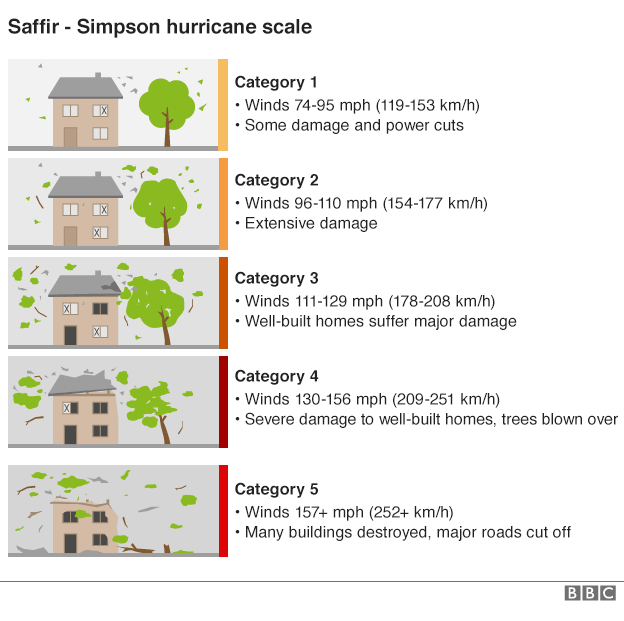
- Attribution
- Published25 August 2017
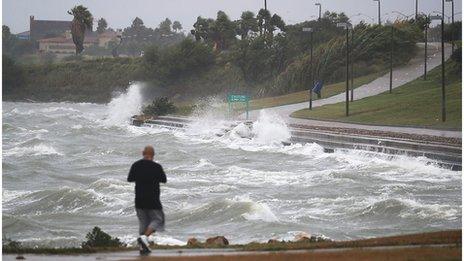
- Attribution
- Published1 October 2016
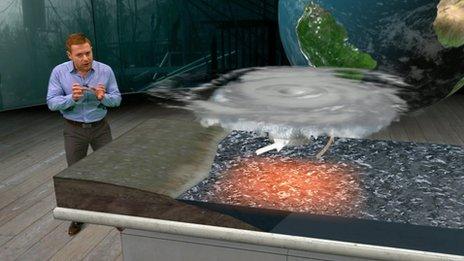
- Published25 August 2017
